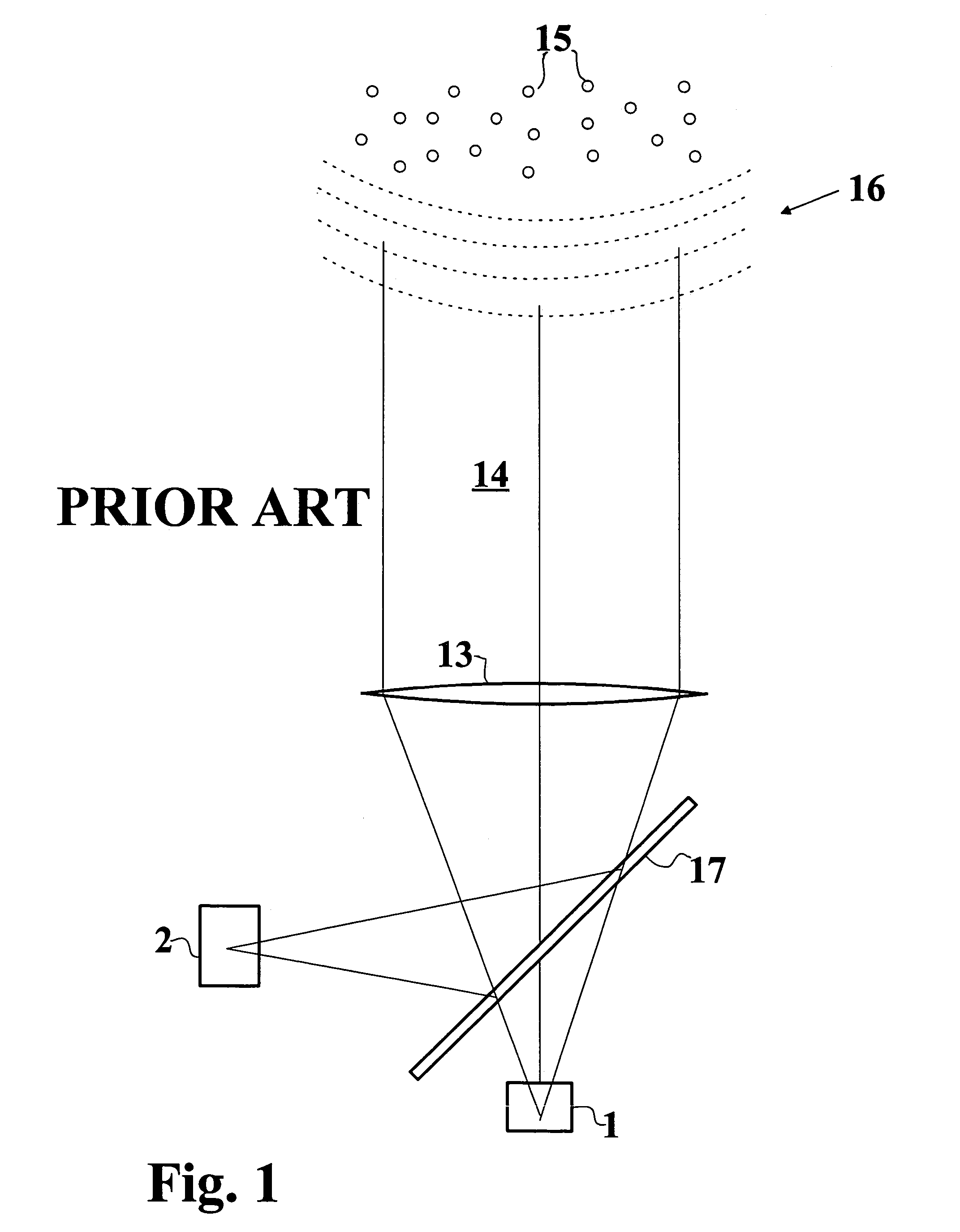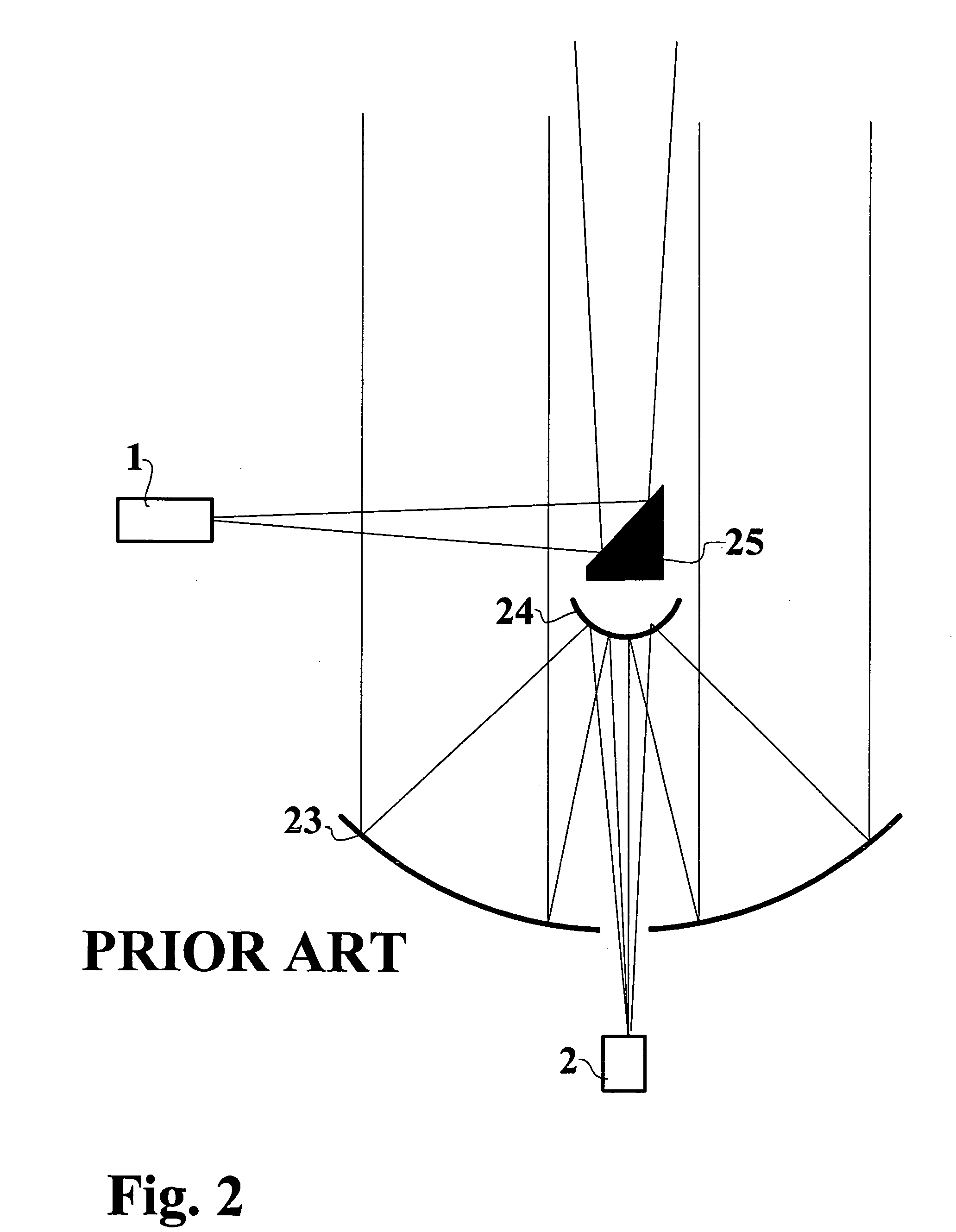Lidar
a lidar and mirror technology, applied in the field of lidar, can solve the problems of affecting the accuracy of lidar, so as to reduce scattering, save the loss caused by semi-translucent mirrors, and improve efficiency
- Summary
- Abstract
- Description
- Claims
- Application Information
AI Technical Summary
Benefits of technology
Problems solved by technology
Method used
Image
Examples
Embodiment Construction
[0048]The solution of FIG. 3 includes an integrated optical component 6 and a reflecting element 7, with the aid of which a transmitter beam 3 and a receiver beam 4 are formed. The integrated optical component 6 consists of, in this solution, a single lens 33. A mirror 34, in the centre of which a hole has been made, acts in turn as the reflecting element 7. The mirror 34 is positioned in such a way that the light obtained from the transmitter 1, which is located at the focal point of the lens 33, is directed through the hole in the mirror 34 to the central area of the lens 33, where it is refracted to form a transmitter beam of the desired shape. The mirror 34, however, is positioned so that the light arriving from the area of the desired receiver beam to the edge area of the lens 33 is refracted and reflected towards the reflected focal point. The receiver 2 is located at this reflected focal point.
[0049]In the basic solution of the embodiment of FIG. 3, there are thus four optica...
PUM
 Login to View More
Login to View More Abstract
Description
Claims
Application Information
 Login to View More
Login to View More - R&D
- Intellectual Property
- Life Sciences
- Materials
- Tech Scout
- Unparalleled Data Quality
- Higher Quality Content
- 60% Fewer Hallucinations
Browse by: Latest US Patents, China's latest patents, Technical Efficacy Thesaurus, Application Domain, Technology Topic, Popular Technical Reports.
© 2025 PatSnap. All rights reserved.Legal|Privacy policy|Modern Slavery Act Transparency Statement|Sitemap|About US| Contact US: help@patsnap.com



